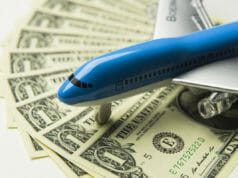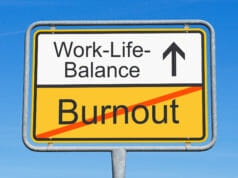
With numerous airlines operating in today’s industry, it seems that there is always at least one pilot group attempting to renegotiate a new pilot contract. When one airline gets a new, better contract, it is reasonable to expect that all other pilot groups will want something equal or better. But what are the limitations for pilots when it comes to negotiating? Can pilots legally stop working, or affect the airline’s operation to get their way? Are they eligible for contract improvements even if their contract is not over?
Airline pilot groups are usually represented by a union association (e.g. ALPA or Teamsters) or self-represented by an organization formed by the pilot group. (Southwest Airlines has SWAPA-the Southwest Airlines Pilots Association.) These groups work with the airline’s management team to come up with a type of work agreement. There are various names for the agreements, such as collective bargaining agreement, contract, work agreement, etc. The agreement dictates the work rules the pilots must abide by and has a timeframe associated with it, usually four years. Unlike other contracts allowing workers to stop working when the contract expires, airline pilots are governed by the Railway Labor Act of 1926. This law came to include the airline industry to prevent disruption in passenger travel, stating that when a contract expires and is being negotiated, workers must continue to work under the provisions of the previous contract until a new agreement is reached.
Modifications can be made to a pilot group’s contract for various reasons. For example, consider all the changes that have occurred at the regional airlines in the past few years. Airlines one-up each other to provide something more than their competitors. Changes to pilot contracts must be agreed to, for the most part, by both the airline’s management and the airline’s union group. Matters such as improvements in pay rates must be agreed to, even if both parties would benefit. There are different ways that such alterations can take place.
A tentative agreement (TA) in general can be any change, major or minor, to a work agreement. This change usually comes before a work agreement is up for negotiation. For a TA to be implemented, at the least, the union representatives vote on the TA. Most likely, if union representatives have decided to pass the TA, they will then send it out to the pilot group for vote.
A tentative agreement usually encompasses numerous changes, but a Letter of Agreement (LOA) is usually confined to a smaller number of modifications. An LOA is also a change to a work agreement before the agreement is up for renegotiation. Changes can include work rules or pay rates. Additionally, the LOA could be up for vote among the union representatives and the pilot group, or could simply be implemented if agreed to by management and the union.
A memorandum of understanding (MOU) is usually a clarification to a pilot contract. The reasons why an MOU is brought forth is usually borne from a common misunderstanding in the work agreement which may have led to pilots filing grievances. It is possible that an MOU involves a change to a work agreement, and similar to an LOA, does not require pilot vote to be implemented; mutual agreement between airline management and the union’s representatives suffices.
What can pilots do when negotiations stall and their work rules are vastly inferior to their counterparts at other airlines? Depending on the airline’s union representation, a higher level committee with oversight will have to be brought in (e.g. ALPA carriers will need to coordinate with the National Mediation Board). In general, the pilot group cannot disrupt the airline’s operation during negotiations. Pilot groups can conduct informational picketing at domiciles where off-duty pilots can gather with banners. Another option lies in advertisements, provided safety is never mentioned.
If negotiations still drag on, the higher overseeing power can determine that an impasse has been reached between the airline’s management and union representation. This would prompt a 30-day “cooling period” where no negotiations take place. Afterward, the union representation can seek self-help which can include a lockout or strike.
It is important to mention what pilots cannot do. In the past, during arduous negotiations, the pilot group has determined to inflict some sort of operational degradation in order to “stick it” to management. Examples of actions deemed to impact the airline’s operation are taxiing very slowly for passengers to miss their connections, taxiing with both engines running in order to increase fuel consumption for the company, pilot sickouts, and increasing the number of mechanical write-ups. It is rather easy to compare year by year statistics to indicate whether a pilot group is purposely causing these impacts upon the operation. Although not in every case, if the airline feels that the pilot group has degraded operations during negotiations and decides to take the matter to court, the court may (and in the past has done so) side with the airline. The end result? The pilot group is either fined or is required to pay the price associated with the degraded operation.
Airline negotiations are always time consuming for both pilots and management. There are avenues in place to improve quality of life for pilots between contract negotiation periods, but those alone may not be enough. No matter how brutal the working conditions may be and how emotional pilots can get when no progress is being made, it is important for pilots to understand what their legal standing is, and what they can and cannot legally do to reach a resolution with the airline.












































































